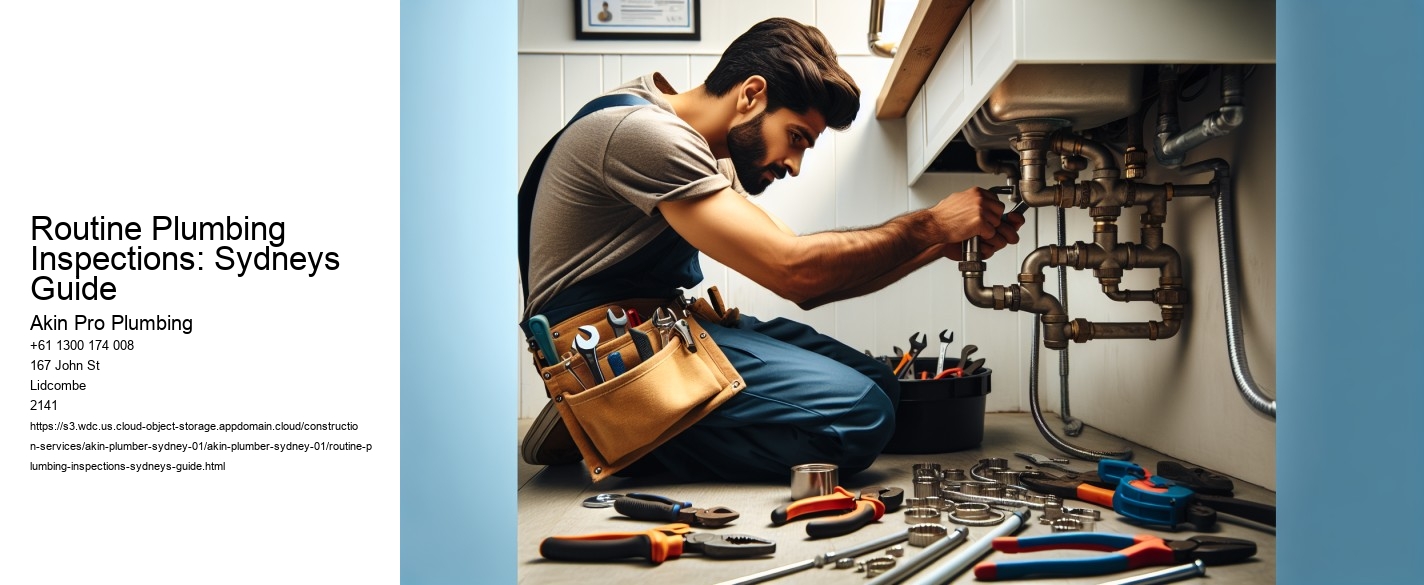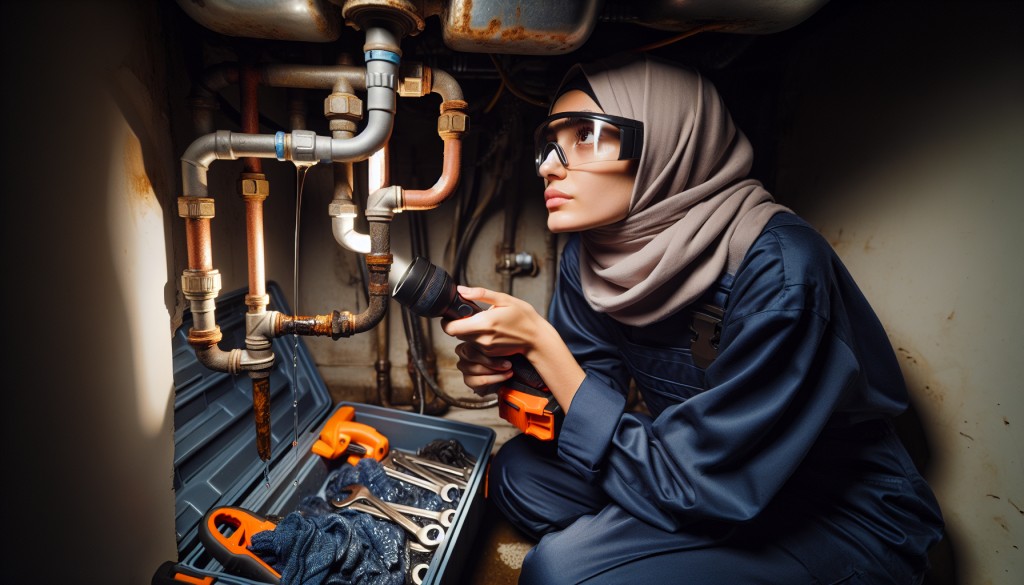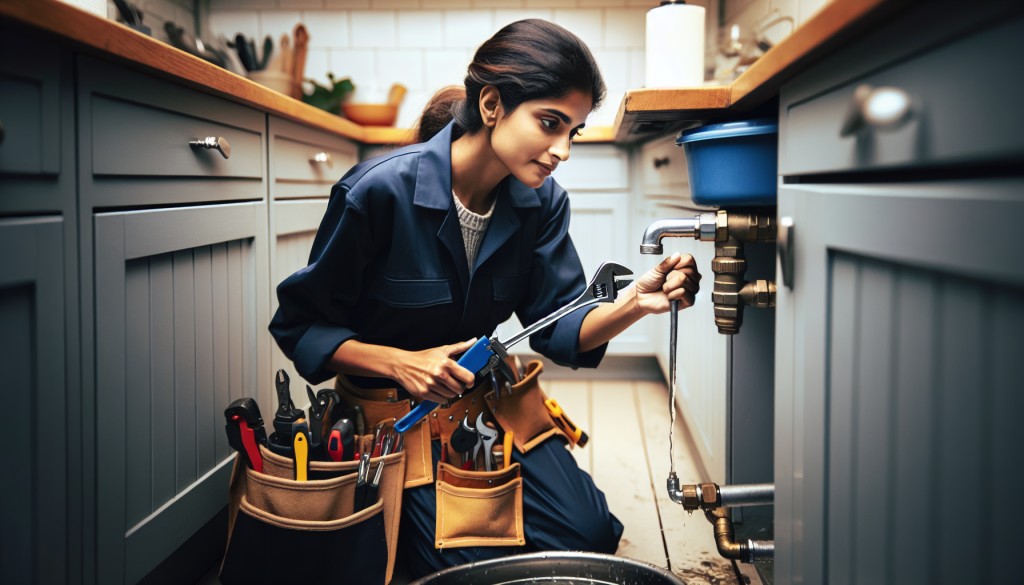
Routine Plumbing Inspections: Sydneys Guide
In the bustling city of Sydney, known for its iconic opera house, stunning harbour, and vibrant cultural scene, theres an often-overlooked yet essential aspect of urban living: plumbing. Avoiding Unexpected Fees with Sydney Plumbers . Routine plumbing inspections, while not as glamorous as the citys famous landmarks, play a crucial role in maintaining the health and efficiency of homes and businesses.
Plumbing systems are the unsung heroes of modern living. They provide clean water for drinking, bathing, and cooking, and they safely dispose of waste. However, like any complex system, plumbing requires regular maintenance to function effectively. Backflow prevention Northern Suburbs Routine inspections are vital for several reasons:
Preventing Costly Repairs: Small issues, such as leaks or blockages, can escalate into major problems if left unaddressed. Regular inspections help identify and fix these issues early, saving homeowners and businesses from costly repairs in the future.

Ensuring Water Quality: Sydneys water supply is generally of high quality, but issues within a propertys plumbing system can lead to contamination.
Conserving Water: Australia is a country that often faces water scarcity issues. By identifying leaks and inefficiencies, routine inspections help conserve this precious resource, contributing to both environmental sustainability and reduced utility bills.
Extending System Lifespan: Just as regular car maintenance extends the life of a vehicle, routine plumbing checks can prolong the lifespan of the plumbing system. This can delay the need for expensive replacements and renovations.

A comprehensive plumbing inspection in Sydney typically involves several key components:
Visual Inspection: A plumber will visually assess the plumbing system, checking for signs of wear, leaks, or damage. This includes inspecting pipes, fixtures, and appliances.
Water Pressure Check: Adequate water pressure is essential for the proper functioning of a plumbing system. The plumber will measure the water pressure to ensure it falls within the recommended range.

Leak Detection: Using specialized tools, plumbers can detect hidden leaks in walls, floors, or underground. Early detection is crucial to prevent water damage and mold growth.
Drain and Sewer Line Assessment: Clogged drains and sewer lines can lead to unpleasant odors and potential health hazards.
Inspection of Water Heaters: Water heaters are vital for comfort and hygiene. A thorough inspection will check for sediment build-up, corrosion, and proper temperature settings.
When it comes to routine plumbing inspections, choosing a reputable and experienced service provider is essential. Here are some tips for finding the right plumber in Sydney:
Check Credentials: Ensure the plumber is licensed and insured. This provides a level of assurance that they have the necessary skills and knowledge.
Read Reviews and Testimonials: Online reviews and customer testimonials offer insights into the quality of service provided by a plumbing company.
Ask for Recommendations: Word of mouth is a powerful tool. Ask friends, family, or neighbors for recommendations based on their experiences.
Compare Quotes: Obtain quotes from multiple plumbing services to ensure competitive pricing. However, be cautious of prices that seem too good to be true, as they may indicate subpar service.
Routine plumbing inspections are an essential aspect of home and business maintenance in Sydney. By preventing costly repairs, ensuring water quality, conserving water, and extending the lifespan of plumbing systems, these inspections provide significant benefits. For Sydney residents, investing in regular plumbing checks is a proactive step towards maintaining the comfort, safety, and efficiency of their properties. As the city continues to thrive and grow, let us not forget the importance of keeping our plumbing systems in top shape, ensuring that they remain the quiet yet crucial backbone of our daily lives.
The plumber's wrench, also known as a Swedish pattern wrench, is a versatile plumbing tool designed to lock onto and twist plumbing pipes with mechanical advantage.
Unlike traditional wrenches, the plumber wrench adjusts via a turning collar, allowing for quick size changes without the need for a lock nut. It’s especially useful for working on plumbing fittings, and even bolts. But be careful — if used improperly, it can damage delicate piping.
The invention of this tool dates back to 1888, when Swedish inventor Johan Petter Johansson created the plumber wrench. He also enhanced the adjustable wrench design with a patent in 1891, making him a key figure in hand tool history.
Today, the plumber wrench is more commonly found in Europe than in North America, where other designs like the Stillson wrench and channel-lock pliers are more common.
Plumbers and technicians use this wrench for:
- Locking threaded pipes
- Turning stubborn fittings
- Maintaining grip on round surfaces
- Removing pipes without damaging them
Its design provides stable control with less physical effort, making it a top choice for jobs requiring precision and power.
While newer tools exist, the plumber wrench remains a timeless addition to any plumber’s toolkit. With its clever design and historic origins, it’s a true example of tool-making genius in plumbing history.
A plumbing appliance is a interchangeable device that attaches to a plumbing system to provide and remove water.
=== Typical Water Fixtures ===
Common water-supplying fixtures are:
Basins
Showers
Bathtubs
Toilet-adjacent sprayers
Water bubblers
Tapware
Connections for dishwashers
Ice maker valves
Channel drains
Wall-mounted toilets
Flush toilets
=== Fixture Waste Systems ===
Most fixtures include one or more exit points and drainage connections. Many also include:
A flood rim
An backup drain to redirect excess water
A drain stopper to hold water in the basin (for sinks, tubs)
Toilets and open showers usually don’t have overflow protection due to their open-drain nature.
Each fixture has its own connection style. Standard practice includes shutoff valves before each fixture. Supply lines are often:
Flexible braided hoses
Rigid tubes
Hot and cold lines
Toilets usually have a flat neoprene washer, while sinks use a conical one. Tubs and kitchen faucets may be soldered or fitted with compression joints directly to the water supply.
=== How Plumbing Fixtures Drain ===
Key parts of drainage include:
The strainer (main exit of the basin)
The tailpiece (connects to the trap)
The wax ring (seals a toilet base to the flange—usually beeswax or synthetic)
Proper seating and alignment of toilets are vital to ensure sealing and prevent leakage.
=== Drain Traps ===
All fixtures are designed with traps—U- or S-shaped bends that hold water, creating a seal that blocks sewer gases. Examples:
Integral traps: Found in toilets, urinals
External traps: Found under sinks and tubs
Venting is essential to avoid siphoning water out of the trap or pressurizing the sewer gases. Lack of venting can cause bad smells.
=== Smart Fixtures ===
Public restrooms increasingly use:
Automatic flush toilets
Touchless urinals
Infrared taps
Sensor soap dispensers
Benefits:
Reduced contact
Water-saving features
Fewer mechanical parts
Some smart flushers adjust the volume based on traffic, avoiding unnecessary full flushes.
Drawbacks:
Some users dislike unexpected flushing
Children may be startled
Some parents use sticky notes to cover sensors
Installation requires both a plumber and an electrician, and troubleshooting can be harder due to the microelectronics involved.
=== Compliance Guidelines ===
Some of the widely recognized standards include:
ASME A112.18.1 – Plumbing Supply Fittings
ASME A112.18.2 – Plumbing Waste Fittings
Fixtures must comply with local building codes and health standards, especially those connected to both potable and non-potable water systems.
A plumber is a trained worker who fits and services systems used for drinking water, hot water, wastewater, and drainage. Plumbers play a key role in both residential, commercial, and construction environments.
The word "plumber" derives from the Latin term "plumbum," meaning lead, because Roman-era plumbers often worked with lead piping. While lead is no longer used today, the name stuck around.
To become a plumber in many regions, one must complete a structured training program and earn a Certificate III in Plumbing. This often includes basic gas fitting training and allows the plumber to work under supervision on gas-related tasks. With experience, plumbers can apply for a full gas license.
Typical tasks include:
- Understanding plumbing plans
- Installing and repairing pipes and fixtures
- Identifying plumbing issues and their causes
- Working with pipes
- Testing systems for leaks
- Adhering to building codes and safety regulations
In some countries, like Canada, plumbing standards are unified under programs like the Red Seal. In contrast, places like Colombia do not require official certification, although many plumbers train informally through family or trade schools.
In the UK and Ireland, formal qualifications and vocational exams are required. In the US, licenses and regulations vary by state, and many regions distinguish between journeyman and master plumbers.
Plumbers face a number of hazards, including electric shocks, cuts, falls, exposure to chemicals, and infectious diseases, especially when dealing with sewage. That’s why proper training and safety practices are critical.
Today’s plumbers also work with modern technologies like CCTV pipe inspections, water-saving systems, and high-pressure jetting equipment. Whether you're renovating a bathroom, fixing a leaky tap, or handling a burst pipe, a licensed plumber brings expertise, safety, and peace of mind to every job.
Fluid system fittings are components used to link sections of pipe or tubing, adapt size, and regulate fluid movement in a variety of systems. They’re found in drinking water, agricultural, sewage, refrigeration, gas, petroleum, and commercial pipelines.
These fittings allow pipelines to extend farther, branch off, or step up/down—making complex systems possible. Valves, a type of specialized fitting, let you start or control fluid flow.
Fittings are made from materials that suit their use and connection method—common examples include:
— **Copper** (soldered joints)
— **Brass or iron** (threaded fittings)
— **Brass** compression fittings and adapters
— **PVC and CPVC** for wastewater systems
They’re installed by methods like sweating, solvent welding, threading, compression fittings, plastic welding, and friction or push-fit joints.
Fitting types include:
— **Adapters**: connect different pipe types, manage contraction, or mismatch in diameter or thread.
— **Elbows** (45°, 90°): change direction, and come in short-, long-, or custom-radius styles.
— **Couplings**: join pipes of the same size, while **reducing couplings** connect different sizes.
— **Unions**: allow easy disassembly—great for maintenance or replacements.
— **Reducers and bushings**: shift pipe size down, either concentrically or eccentrically.
— **Tees and crosses**: split or join multiple flow lines—tees have three, crosses have four.
— **Caps and plugs**: seal open ends, either temporarily or permanently.
— **Barbs**: secure flexible hoses to plumbing lines.
— **Valves**: control flow—types include gate, ball, globe, needle, butterfly, diaphragm, or check valves.
Choosing materials and standards is important. Options include:
— **Metal**: copper, stainless or galvanized steel, cast iron, malleable iron, chrome-alloy steels
— **Non‑metal**: PVC, CPVC, ABS, PEX, HDPE, FRP
— **Brass/bronze** for corrosion-resistant fittings
— All parts must align with building/plumbing codes and materials compatibility (e.g., no mixing dissimilar metals without a dielectric union).
Gaskets are used at flange joints and come as:
— **Non‑metallic ring gaskets** (ASME B16.21),
— **Spiral‑wound** (ASME B16.20),
— **Ring‑joint gaskets** for RTJ flanges.
Inspectors rely on standards from:
— ASME (B36, B16, B31 series), ASTM, API, AWS, AWWA, ANSI, NFPA, MSS, CGA, PCA… and others to ensure safe, reliable systems.
In home systems, you’ll often use push-fit plastic or compression fittings. In commercial sites, you might see heavy-duty threaded or welded flanges.
Proper selection of pipe fitting type, material, and size ensures that your plumbing system is durable and clog-resistant.
Cabling and piping at the LHC demonstrate the synergy between MEP systems.
MEP engineering involves the design and installation of critical infrastructure that ensure comfort and operation of buildings. In both homes and businesses, such systems are typically engineered by qualified design teams.
The design of MEP systems is crucial for infrastructure development, cost estimation, future upkeep, and documentation accuracy.
Rather than simply placing components, MEP includes the strategic selection for these systems. For instance, a plumber might choose and install a high-capacity boiler based on local regulations. On the other hand, MEP engineers research and select the optimal design, considering fluid dynamics, and then deliver precise specs to the installation crew.
To excel in MEP, engineers need a broad skillset—including everything from chemistry and thermodynamics to software and electrical systems.
In the past, MEP layouts were created by hand, which made revisions difficult. Today, software tools like CAD and BIM (Building Information Modeling) streamline the process with 3D models, clash detection, and live updates. In some cases, GIS are also used to manage components.
The mechanical part, often associated with HVAC, includes systems for airflow, such as ventilation, heating, and cooling. Advanced facilities may use energy-efficient coolers to reduce overhead, sometimes saving up to massive amounts on utility bills compared to traditional cooling.
Energy use matters—so MEP engineers compare options like heat pumps against cost, ease of installation, and effectiveness.
Nearly every building includes mains electricity between 100–500 volts, with conduits run through walls, ceilings, and subfloors. Lighting and sockets are typically on separate circuits for safety.
For industrial loads, three-phase power must be accounted for in schematics to support high-draw equipment.
Data cabling like internet, phone, CCTV, and audio distribution are also a part of MEP. These are typically installed by different technicians separate from the main electricians.
Pipes and drains are essential for both comfort and hygiene, providing drainage and stormwater handling. In commercial setups, they may also support advanced lab setups or factories.
Additionally, plumbing helps with cooling systems—like moving fluids across HVAC units. Air ducts may be installed separately.
Plumbing is any system that conveys fluids for a broad array of applications. It typically includes tubing, valves, plumbing fixtures, tanks, and other equipment. While commonly associated with potable water systems and wastewater systems, plumbing is also used in heating and cooling (HVAC), fuel gas systems, and other industrial uses.
The word “plumbing” comes from the Latin word *plumbum*, meaning lead. That’s right — our pipe-loving ancestors were already using lead pipes when most people were still figuring out fire.
Plumbing has a long and leaky history. Civilizations like Mesopotamia, the Indus Valley, and Egypt all developed early plumbing methods. In fact, the Mesopotamians were already using clay sewer pipes as far back as 4000 BCE. The Indus Valley even had standardized earthenware piping with asphalt seals — that’s some serious engineering.
By 2400 BCE, Egyptians were already laying down copper pipes. And in Rome, the plumbing game peaked with lead aqueducts, intricate tile drainage, and a little light water theft prevention thanks to pipe inscriptions.
Of course, things took a bit of a downturn after Rome’s fall. For about 1,000 years, sanitation meant tossing waste out the window and hoping for rain. It wasn’t until the 1800s that densely populated cities got their act together, creating separate sewer and water systems to fight disease.
Today, plumbing serves a wide variety of functions. The main types include:
- Potable water supply (cold and hot)
- Plumbing drainage and venting
- Sewage and septic systems, with optional greywater recovery
- Fuel gas distribution
- Rainwater and stormwater management
- Hydronic heating and cooling systems
Water pipes themselves have evolved, too. While Romans used lead, today we prefer copper, PEX, and PVC (with fewer health hazards). Fun fact: wooden water pipes were used in places like London and Philadelphia up until the 1800s — they sealed them with hot animal fat. Tasty.
From lead to copper, and wood to plastic, plumbing continues to evolve — but the goal remains the same: keep clean water flowing in and the nasty stuff flowing out. Just maybe with fewer explosions.
Professional Plumbing Services truly lives up to its name ! Thy offer excellent prices and are incredibly prompt in their responses. Adem is reliable and super trustworthy. I felt confident leaving the job in their hands, and they exceeded my expectations. Highly recommend them for any plumbing needs!
I recently purchased an investment property which required a thorough inspection. as I was searching for a plumber local online who looked reliable. I came across Akin Pro Plumbing. Adem took my call and came out to inspect so he could provide a clear quote and did not charge any call outs. I ended up proceeding with him as he was very responsible friendly and has a lot of knowledge in the field which lack these days. The quality Of his service are exceptional and prices are very reasonable. I highly recommend Akin Pro Plumbing to those looking for a local plumber who is trustworthy, professional and affordable. All the best !
I highly recommend Adem’s plumbing services. I have found him to be highly professional and knowledgeable. He performs his services in a timely and thorough manner and cleans up after the job has been completed.